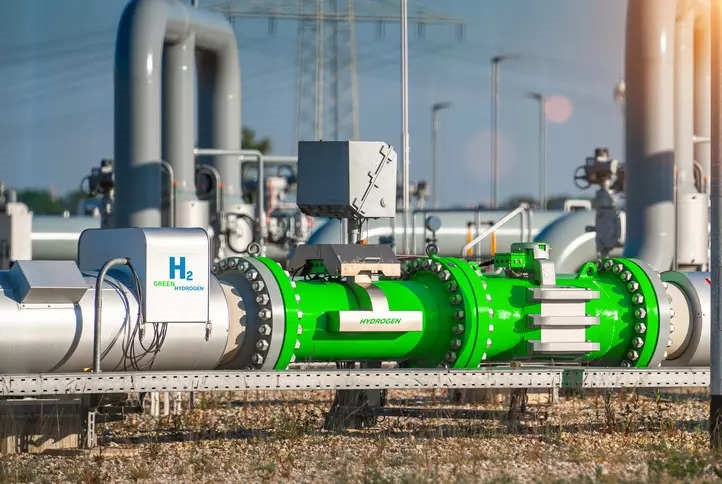Free Courses Sale ends Soon, Get It Now


Free Courses Sale ends Soon, Get It Now



Disclaimer: Copyright infringement not intended.
Context
Inauguration of Green Hydrogen Plant:
Usage Plan:
Renewable Power Initiatives:
READ ALL ABOUT GREEN HYDROGEN
https://www.iasgyan.in/daily-current-affairs/green-hydrogen-47
|
Status of Green Hydrogen in India The adoption of Green Hydrogen in India is currently in its nascent stages, marked by several pioneering projects. GAIL Limited has launched India's first project to blend hydrogen into the City Gas Distribution grid, with 2% hydrogen by volume mixed into the CNG network and 5% into the PNG network in Indore, Madhya Pradesh. NTPC Limited has begun blending up to 8% green hydrogen in the PNG network at NTPC Kawas Township in Surat, Gujarat since January 2023. Additionally, NTPC has deployed hydrogen-based Fuel-Cell Electric Vehicle (FCEV) buses in Leh and Greater Noida, while Oil India Limited has developed a 60 kW capacity hydrogen fuel cell bus, combining electric drive with fuel cell technology. Indian Oil is demonstrating pilot plants for green hydrogen production via water electrolysis using solar power, biomass oxy steam gasification, and CBG reforming to refuel 15 hydrogen fuel cell buses. Several entities are also planning to establish green hydrogen and green ammonia production facilities across the country. Although the impact on job creation, oil dependence, and exports has been modest due to the early stage of green hydrogen adoption, significant outcomes are anticipated by 2030 under the National Green Hydrogen Mission. India's green hydrogen production capacity is expected to reach 5 MMT annually, potentially reducing fossil fuel imports by ₹1 lakh crore and attracting investments over ₹8 lakh crore while creating over 6 lakh jobs. The Strategic Interventions for Green Hydrogen Transition (SIGHT) scheme has issued a Request for Selection to set up production facilities for 450,000 tons of green hydrogen in India. |
|
PRACTICE QUESTION Q. Examine the significance of green hydrogen in India's energy strategy, its potential benefits, the challenges in its widespread adoption, and the way ahead for its integration. |
© 2024 iasgyan. All right reserved